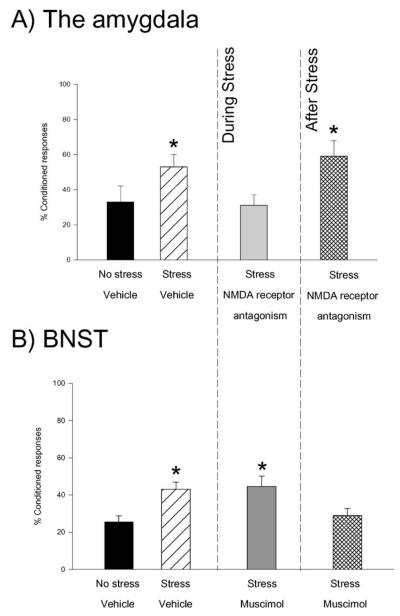Figure 8.
The amygdala and bed nucleus of the stria terminalis (BNST) are involved, but at different times. (A) The percentage of conditioned responses in groups of male rats is shown. They were either unstressed or stressed in the presence of a vehicle or an N-methyl-D-aspartate (NMDA) receptor antagonist in the basolateral nucleus of the amygdala. Exposure to the stressor enhanced the percentage of conditioned responses in groups that were injected with a vehicle or if they were injected with the antagonist after the stressful event was over. The group that was injected with the NMDA receptor antagonist prior to the stressful event did not express an increase in conditioned responses (Shors & Mathew 1998). Asterisk denotes a significant change in response relative to the response from the No Stress group. (B) As described above, exposure to the stressor enhanced the percentage of conditioned eyeblink responses in males. However, inactivation of the BNST during the stressful event did not prevent the enhanced conditioning, whereas inactivation during training was effective (Bangasser et al. 2005). Asterisk denotes a significant change in response relative to the response from the No Stress group.

